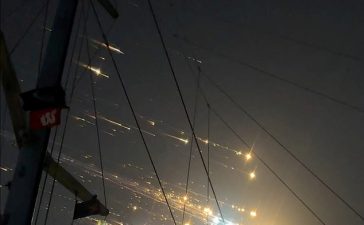He was described as being in very poor health and living a lonely existence by magistrate Emma Arbuthnot as she sentenced Freddie Scappaticci, then 72, to a three-month suspended jail term.
It was 5 December 2018. Westminster magistrates court had heard that Scappaticci, wearing a grubby blue fleece and green tracksuit bottoms, had used a laptop seized by police earlier in the year to search for information on “cars, the British army, maps, combat, football and politics”.
But there had also been 13 searches for extreme pornography. Some of it had included animals. It was this that had landed him in the dock.
Scappaticci had told police officers in mitigation that he was depressed, a condition with which he had suffered for a number of years. He wasn’t really interested in animals that way. He preferred women with big breasts. It was “not doing anyone any real harm”.
The shabby, overweight figure left the court on London’s Marylebone Road a free man. “You have not been before the court for 50 years – and that’s good character in my book,” Arbuthnot had told him.
It was a wounding comment then and, particularly, now for the relatives of the many victims of Scappaticci’s past as one of the most notorious killers of the troubles in Northern Ireland, who tortured and murdered informants within the IRA at the same time as being a British informant himself – the “jewel in the crown” of the state’s intelligence operation, according to one senior army officer.
Both the victims’ families and, it is understood, former Bedfordshire chief constable Jon Boutcher – who has been leading Operation Kenova, an investigation into Scappaticci and his relationship with the state – have long been severely frustrated by a failure of the prosecution service to act on referrals made to them on 2 October 2019 against the former IRA enforcer and those who worked with him.
It is understood that Boutcher, whose officers had discovered Scappaticci’s pornography at the start of their investigations after seizing his laptop, had even made the decision to publish an interim report on his wider findings later this year, in an effort to both satisfy the families’ yearning for information and to push the prosecution service into taking action.
In the end, however, this brief appearance in 2018 would prove to be the last time Scappaticci would ever see the inside of a court, let alone a jail cell.
On Tuesday, Boutcher revealed in a statement that he had been informed that Frederick Scappaticci had died shortly before Easter at the age of 77, almost exactly two decades after his identity as agent Stakeknife was exposed, forcing him to flee into anonymity in England. His death from natural causes followed a series of strokes, including a very serious one 18 months ago, it is understood.
He had lived in south Cheshire, it can be revealed. He took holidays with his estranged wife, who had remained in Belfast, in the Canary Islands, and also spent some time residing on a gated street in London. He was able to move about as he was a wealthy man thanks to the proceeds of his treachery against the IRA and a tax scam that was popular among the organisation’s senior members.
He is also understood to have carried on working for a while in the building trade, his formal occupation. Scappaticci appeared briefly at his 98-year-old father’s funeral in west Belfast in 2017.
But much of his life in exile had been spent around Manchester. Immediately after Scappaticci left Belfast in 2003, he had been tracked via his laptop to an ice cream warehouse near Manchester City’s Etihad stadium. He was a City fanatic. His father had run an ice cream business. Perhaps the two things were linked – but as with so many of his secrets, the truth of the matter is now buried with him.
“The cynical view before he died was that was never going to be any prosecution and now he is gone there is no doubt,” said Kevin Winters, a lawyer representing the families of the victims of the arrangement between Scappaticci and the British state.
Greg Harkin, the journalist who worked with former British military intelligence officer, Ian Hurst, to identify Scappaticci in May 2003 despite a series of injunctions, put it succinctly: “I never believed there would ever be a court case. There was no way Freddie Scappaticci was going to appear in a court of law and be prosecuted for anything he had done working for the British.”
Scappaticci grew up in the Markets area of south Belfast, an area known as Little Italy, and was a talented footballer, trialling with Nottingham Forest in 1962 as a 14-year-old but returning home after three weeks suffering from home sickness. He was also an early volunteer for the nascent provisional IRA, and was known for having a short fuse.
After being interned in the 1970s, when the British started locking up suspected IRA members without trial, he moved up the ranks, becoming first the head of the Belfast brigade, then number two and leader of the internal security unit charged with flushing out informers.
Scappaticci was, it is said by almost all those who knew him, a monster in the role, seemingly taking pleasure in killing “touts”. His tactic was to threaten to string up and skin the victim before offering to let them go free if they confessed, only to then order or indeed carry out their execution. He would play taped confessions to the families left behind.
But, likely due to some grievance over a beating he took from a fellow IRA member, he was soon the British state’s monster, offering his services to military intelligence in 1978, said Ricky O’Rawe, who knew him as another IRA man and who has written a new book, Stakeknife’s Dirty War, which will be published in October.
This arrangement, O’Rawe said, meant that Scappaticci’s British handlers would have been notified in advance of every killing by the internal security unit, also known as the nutting squad.
after newsletter promotion
They could have stopped the murders – a startling claim, but one that was effectively admitted by retired Gen Sir John Wilsey, the most senior British officer in Northern Ireland at the time of the killings, when he was tricked into a phone interview in 2012. “Well, the argument is that you balanced the good with the bad, didn’t you?” he said.
O’Rawe added that Scappaticci was a “bully” who “no one had a good word to say about”. He was also long known to be a “porn fanatic”, with a taste for the extreme. But it was, O’Rawe said, the British state that was pulling his strings, effectively running the Nutting squad.
“Their first victim was a guy called Michael Kearney in 1979. Their last was a wee girl called Caroline Moreland who was killed in 1994. And between that they killed 34 people that we know of. That doesn’t include ‘the disappeared’. They were a killing machine. But it was the British was running this unit. It wasn’t the fucking IRA. It was the British. They said who lived and who died.”
Scappaticci, given the codename Steak Knife (a moniker that was consciously misspelt as Stakeknife in early newspaper stories to provide some cover to the source) and a number, 5027, was publicly outed due to the determination of Ian Hurst, a former member of the Force Research Unit to whom the IRA man gave his “intelligence product”.
Hurst, who was sickened by the lack of controls over Scappaticci, worked first with the Sunday Times and then the Sunday People and other titles to beat the censors and get his name out. “I don’t entirely blame Scap,” said Hurst. “He was allowed to be a mass murderer and the controlling mind was the state.”
When the name was published in multiple newspapers on 10 May 2003, Scappaticci, who had stopped active service with the IRA some seven years earlier, initially sought to brazen it out. Anthony McIntyre, a former IRA member, said he believes the IRA had known about Scappaticci’s British role for a number of years already, after a planned execution was mysteriously interrupted by the British. But the leadership seemingly had an arrangement with him. He was “too big to fail”, said McIntyre.
Scappaticci held a press conference at his solicitor’s office on the Falls Road to reject the claims, while the Sinn Fein leadership said the reports were British disinformation.
But it was not long before he fled Northern Ireland. Retired Rear Admiral Nicholas Wilkinson, who was chairman of the D Notice committee at the time, responsible for advising newspapers over security risks in their reporting, said he recalled receiving calls from Scappaticci and his lawyer, Michael Flanagan, asking him to shut down reporting that might reveal the British agent’s new location. He wasn’t able to help, but the courts did issue a wide-ranging injunction in 2006 preventing further reporting about his new identity, address and medical treatment, which is believed to have been for depression and PTSD.
While the facts of Scappaticci’s new life were under lock and key, it does appear that at least some effort has been made to unlock his past in recent years.
Operation Kenova, a multimillion-pound investigation, was launched six years ago, and has so far produced 50,000 pages of evidence relating to a total of 17 murder victims and 12 abductions.
Boutcher managed to win the trust of the families, and yet the only response from the prosecution service so far to referrals by the police investigation has been to complain about a lack of resources.
They have also dismissed prosecution cases against four individuals including, it is understood, Scappaticci, for perjury relating to his past denials of his role. The “good character” of the killer and his handlers looks set to remain untarnished in the eyes of the law.











